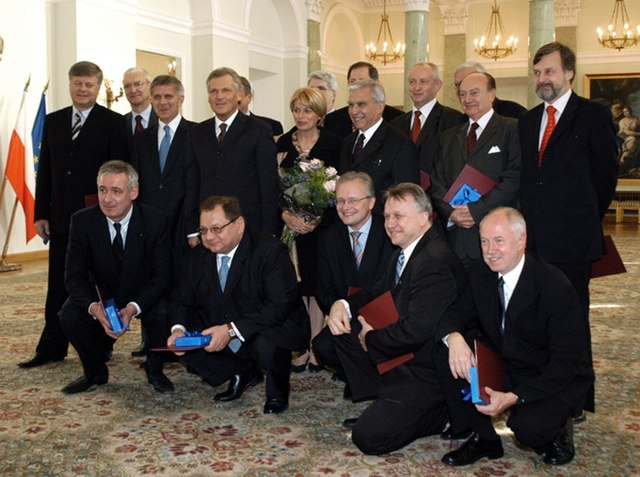The ministries of Poland are the various departments performing functions implemented by the Polish government. Each ministry is headed by a governmental minister selected by the Prime Minister, who sits in the collective executive Council of Ministers. The current competences and regulations of the ministries were established under a series of central administrative reforms carried out by prime ministers Józef Oleksy and Włodzimierz Cimoszewicz between 1996 and 1997. Under legal regulations, the cabinet can create, combine, or dissolve ministries, with the Prime Minister determining the scope and responsibilities of ministers. The number and range of ministries has varied throughout the past.
An honour guard representing the Polish Armed Forces in front of the Ministry of National Defence.
Council of Ministers (Poland)
The Council of Ministers of the Republic of Poland is the collective executive decision-making body of the Polish government. The cabinet consists of the Prime Minister, also known as the President of the Council of Ministers, the Deputy Prime Minister, who acts as a vice-chairman of the council, and other ministers. The current competences and procedures of the cabinet are described between Articles 146 to 162 of the constitution.
Third Cabinet of Donald Tusk
The assembled cabinet of Prime Minister Marek Belka (middle row, second from left) with President Aleksander Kwaśniewski (middle row, third from left) in 2005
The Polish cabinet sits in the elevated government seating box (center) during sessions of the Sejm.
The Chancellery of Poland in Warsaw





